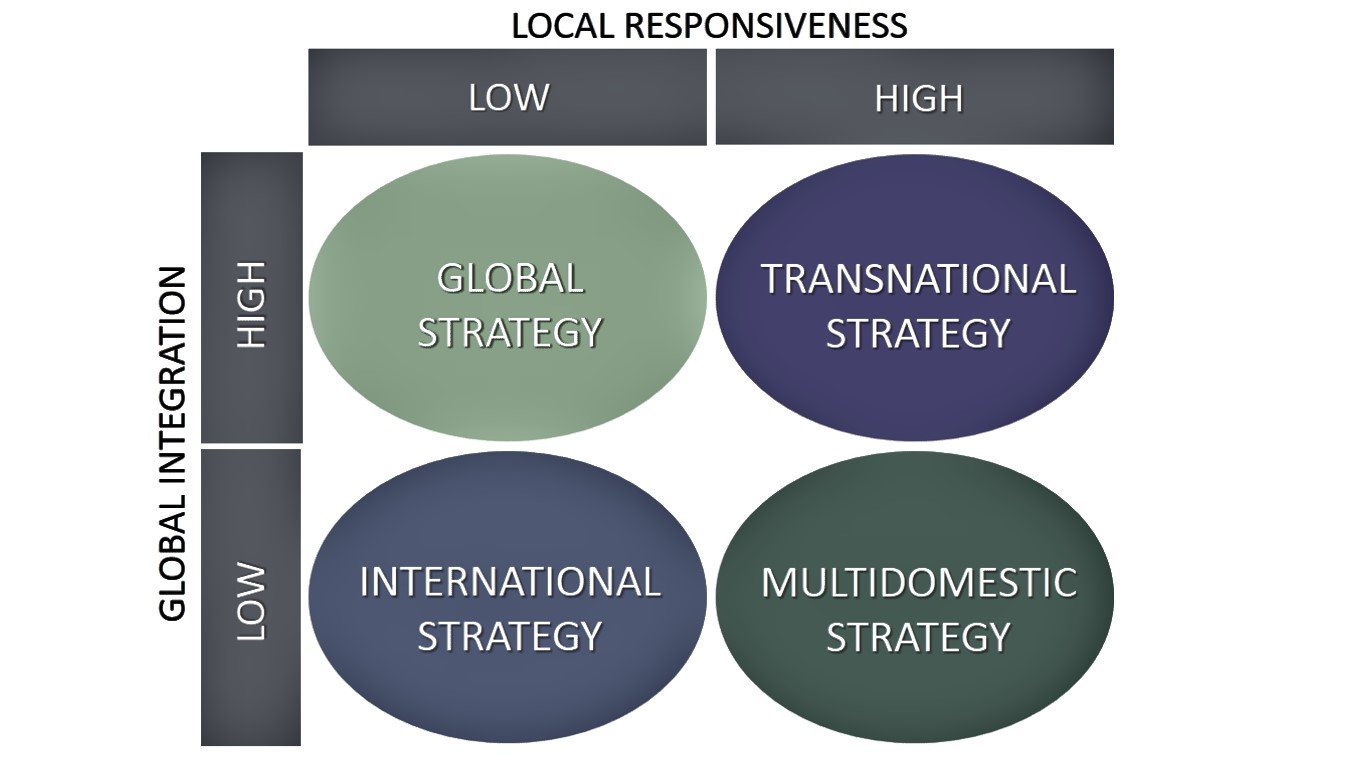Any company that ships worldwide or provides services to consumers or businesses in other countries is considered a global company. An international strategy is usually the first approach most businesses take with global expansion: exporting or importing goods and services while maintaining a head office or offices in their home country.
A firm that has operations in more than one country is known as a multinational corporation (MNC). The largest MNCs are major players within the international arena. Walmart’s annual worldwide sales, for example, are larger than the dollar value of the entire economies of Austria, Norway, and Saudi Arabia. Although Walmart tends to be viewed as an American retailer, the firm earns 35% of its revenues outside the United States. Walmart owns significant numbers of stores in Mexico, Central America, Brazil, Japan, the United Kingdom, Canada, Chile, Botswana, and Argentina. Walmart also participates in joint ventures in China and India. Even more modestly sized MNCs are still very powerful.
Global expansion as a business doesn’t have a one-size-fits-all approach. As companies grow and scale, they may choose to invest more in their target markets.
The three most prevalent philosophies of international business strategy are:
Industry-based which argues that conditions within a particular industry determine strategy.
Resource-based which argues that firm-specific differences determine strategy.
Institution-based which argues that the industry- and resource-based views need to be supplemented by accounting for relevant societal differences of the types mentioned above.
Need:
In marketing and strategy, the market of operation is a very crucial parameter. Thus, a company operating in India cannot employ the same strategies should it want to expand to Russia. So, for a company seeking international foothold, framing of an international strategy assumes a very crucial role. Depending upon the business strategy decided, companies either become aggressive exporters and start exporting goods or open their business units in the market they want to capture
Types:

Transnational Strategy: Transnational businesses operate with a central or head office in one country that coordinates local subsidiaries in international markets. This organizational structure means that there is one overarching brand and center of operations that determine overall decision-making and supply chain management, harnessing the power of scale. Companies McDonald’s, Nike, and Coca-Cola use this model.
Multi-Domestic Strategy: When businesses use completely different sales, marketing, and product strategies based on the specific companies they’re operating in. Rather than one global brand, there are many smaller, country-specific brands tailored to local tastes and local customers. Big-name wellness brands like Johnson and Johnson use this model. Netflix customizes the programming that is shown on its channels within dozens of countries, including New Zealand, Portugal, Pakistan, and India. Similarly, food company H. J. Heinz adapts its products to match local preferences. Because some Indians will not eat garlic and onion, for example, Heinz offers them a version of its signature ketchup that does not include these two ingredients. Outback Steakhouse uses the multi-domestic strategy in the multiple countries where it operates, adapting to local eating preferences but not lowering prices significantly.
Global Strategy: When businesses define one global brand, making little to zero changes for other markets. Tech giant Apple is a great example of this; the technology is the same (with a few minor changes in keyboards) wherever you go. Microsoft, for example, offers the same software programs around the world but adjusts the programs to match local languages. Similarly, consumer goods maker Procter & Gamble attempts to gain efficiency by creating global brands whenever possible. Global strategies also can be very effective for firms whose product or service is largely hidden from the customer’s view, such as silicon chip maker Intel. Lenovo also uses this strategy. For such firms, variance in local preferences is not very important, but pricing is.
Firms pursuing an international strategy are neither concerned about costs nor adapting to the local cultural conditions. They attempt to sell their products internationally with little to no change. When Harley Davidson sells motorcycles abroad, they do not need to lower their prices or adapt the bike to local motorcycle standards. People in other countries buy a Harley particularly because it is different from the local motorcycles. Buyers want the American look and the sound and power of a Harley, and will pay for that differentiation. Belgium chocolate exporters do not lower their price when exporting to the American market to compete with Hershey’s, nor do they adapt their product to American tastes. They use an international strategy. Starbucks and Rolex watches are other examples of firms pursuing the international strategy.
One thought on “International Strategies, Need for International Strategies, Types of International Strategies”